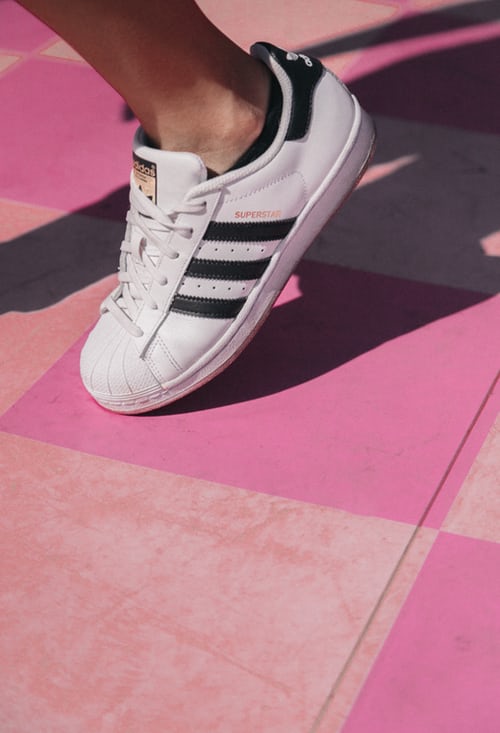I’ve been doing an extra amount of stretching lately. It wasn’t planned. It’s just become a necessity.
Just as my right knee was beginning to show signs of returning to normal post-arthroscopy, I somehow managed to muck up my left knee.
So, now I’m dealing with a severe hamstring strain, severe lower leg pain, and knee instability, which leads me to believe that there’s something going on internally, structure-wise.
But since I know there’s a hamstring involved, that means extra, daily, MILD stretching to keep the muscle and tendon elongated for healing. If I don’t do that, then I run the risk of scar tissue healing in a shortened muscle state, which means whenever I stress it in the future, the scar tissue will likely tear again, I’ll get more bleeding in the muscle and subsequent re-injury. It will be a never-ending, ugly cycle of tear, bleed, repeat.
The reason that happens is that muscle doesn’t heal well. If you have a decent muscle strain, which involves tearing and a void in the muscle belly, you will usually get scar tissue replacing the muscle—hard, tough, non-elastic scar tissue. That’s why you want that muscle on a stretch during healing, so the scar tissue formed will be long and less likely to tear again with muscle contraction.
Get yourself a helpful stretching reference—
To help me in my recovery, I’ve pulled a book off my library shelf to help me in my efforts, one we considered to be the gold standard for stretching.
Stretching by Bob Anderson. He even does the illustrations, which are simple, straightforward, and easy to comprehend. It’s a fabulous book that I had to purchase as a textbook in college. It really is stretching 101 for beginners to advanced athletic participants and exercisers.
You can pick up the 30th anniversary edition, which has been expanded for home office and computer users as well as wheelchair athletes. It’s still the one recommended by sports professionals.
Here’s what the back cover blurb says,
“This is the book that people tell their friends about, that trainers suggest for virtually every sport and activity, and that medical professionals recommend to people just starting to get back in shape. Stretching first appeared in 1980 as a new generation of Americans became committed to running, cycling, aerobic training, and workouts in the gym — all of which are commonplace now.
It features stretching routines specific to a variety of people, including sports enthusiasts, travelers, children, gardeners, and people in wheelchairs. There is also an abbreviated version of each routine for people in a hurry, new information on the stretching vs. warming up debate, and new and improved drawings. This 30th anniversary edition features two-color inks to better define the muscle groups helped by each stretching exercise. A new section focuses on office fitness exercises, helpful for both home and office computer users.”
If you’re up against a muscle injury, make sure you add ice treatment to the stretching regimen. I often ice while stretching or ice afterward. And you really want to make sure you’re doing static, not bounce stretching for an injury. You don’t want little microscopic tears adding to the problem.
Stretching is a must for injury recovery, as long as you aren’t too eager and end up doing more damage. But it’s important at any age and stage of life to keep your muscles, tendons and joints healthy, lubricated, and working at their peak for you.
I can’t stress that enough. Get up and get out and stretch that body! All of it. Consider getting a buddy to stretch with. Teammates help each other stretch all of the time. Do you remember sitting toe-to-toe with a classmate in gym class and stretching each other back and forth?
I have a stretch buddy, myself. Although she hinders my stretching efforts more than helps them. She’s so adorable I can’t refuse her. And she gets my day going with a good belly laugh!
Every time I lean over to do leg stretches, my Shetland sheepdog, Dolly, thinks I’m leaning over to play with her. She doesn’t give up or relent, either. So I often pick her up and swing her back and forth while I’m doing side-to-side stretching. Her legs motor mid-air at a mile-a-minute, and she tries to lick me to death.
If I really want to concentrate and focus, I have to put her outside or seal myself in my bedroom. Our cat, Tibbs, used to help my younger son stretch—by strolling over and parking himself on Cory’s chest when he lay down on the floor to stretch. Cory said stretching never was the same after that precious tabby of ours died.
Good stretching memories!
Whatever age and stage of activity (or injury recovery) you’re in, you WILL benefit immensely from daily stretching. And you will benefit from Bob Anderson’s book. I promise. (I do not make any money from referrals or promotions of his book.)
NEXT WEEK I’ll tell you about a new stretching program being offered at my massage therapy facility. Sounds interesting, and evidently it’s been developed after a lot of research and professional input. I’m excited to give it a test run, but I’ll need to wait until I can completely bend this left knee to participate.
Hopefully I won’t need to recover from yet another surgery first!
Until then, keep those limbs and joints moving,
Andrea
 Andrea Arthur Owan is an award-winning inspirational writer, fitness pro and chaplain. She writes and works to help people live their best lives—physically, emotionally, and spiritually.
Andrea Arthur Owan is an award-winning inspirational writer, fitness pro and chaplain. She writes and works to help people live their best lives—physically, emotionally, and spiritually.
Andrea Arthur Owan is an award-winning inspirational writer, fitness pro and chaplain. She writes and works to help people live their best lives—physically, emotionally, and spiritually.




